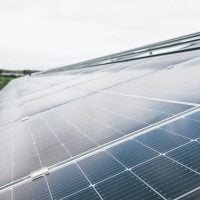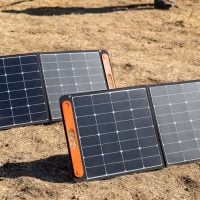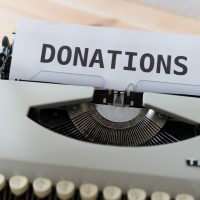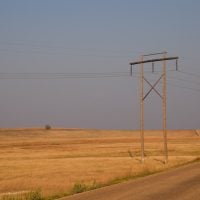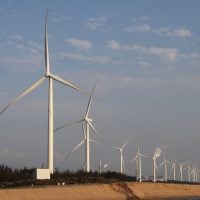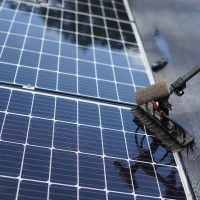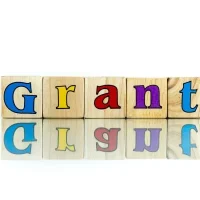In an increasingly interconnected world, the intersection of energy access, health, and education has become a focal point for many non-governmental organizations (NGOs) and donor programs. The provision of reliable energy sources is not merely a matter of convenience; it is a fundamental requirement for enhancing the quality of life, particularly in developing regions. Donor programs that focus on energy access are pivotal in addressing the challenges faced by communities in health and education sectors.
These initiatives not only provide the necessary infrastructure but also empower individuals and communities to thrive. As we delve into the realm of donor programs promoting energy for health and education, it is essential to recognize the multifaceted benefits that arise from such investments. By ensuring that schools have electricity for lighting and technology, and that healthcare facilities can operate essential equipment, these programs create a ripple effect that enhances learning outcomes and health services.
This article will explore ten exemplary donor programs that are making significant strides in this area, providing actionable insights for NGO professionals seeking to engage with or learn from these initiatives. Are You Working on Solar Innovation or Clean Energy Access? Join us to receive updates.
Key Takeaways
- Donor programs play a crucial role in promoting energy for health and education, addressing the needs of communities in developing countries.
- Energy is essential for powering healthcare facilities, schools, and households, impacting the quality of education and healthcare services.
- The top 10 donor programs are selected based on criteria such as impact, sustainability, innovation, and scalability.
- The Global Alliance for Clean Cookstoves is a leading donor program focused on promoting clean and efficient cooking solutions to improve health and reduce environmental impact.
- The United Nations Foundation’s Energy Access Practitioner Network is a key donor program that supports energy access initiatives and partnerships to benefit health and education in underserved communities.
The Importance of Energy in Health and Education Initiatives
Energy access is a critical enabler of progress in both health and education. In educational settings, reliable electricity allows for extended learning hours, the use of digital resources, and improved teaching methodologies. Schools equipped with energy can utilize computers, projectors, and other technologies that enhance the learning experience.
Furthermore, energy access can facilitate adult education programs, which are vital for community development and empowerment. In the health sector, energy is equally indispensable. Healthcare facilities require electricity to power medical equipment, maintain cold chains for vaccines, and provide lighting for surgeries and consultations.
In many low-income countries, the lack of reliable energy sources leads to compromised healthcare services, resulting in higher mortality rates and preventable diseases. By investing in energy solutions, donor programs can significantly improve health outcomes, reduce inequalities, and foster sustainable development.
The Criteria for Selecting the Top 10 Donor Programs

Identifying the top donor programs promoting energy for health and education involves a careful evaluation of several criteria. First and foremost, the impact of each program on target communities must be assessed. This includes measuring improvements in health outcomes, educational attainment, and overall quality of life.
Programs that demonstrate tangible results through data-driven evaluations are prioritized. Another critical factor is sustainability. Donor programs should not only provide immediate relief but also foster long-term solutions that empower communities to maintain energy access independently.
This includes training local technicians, establishing community ownership models, and integrating renewable energy sources. Additionally, collaboration with local governments and stakeholders is essential to ensure that initiatives align with national policies and community needs. Finally, scalability is a vital consideration.
Programs that have successfully expanded their reach or have the potential to do so are more likely to be recognized as leaders in the field. By focusing on these criteria, we can highlight donor programs that are not only effective but also serve as models for future initiatives.
Donor Program #1: The Global Alliance for Clean Cookstoves
The Global Alliance for Clean Cookstoves is a groundbreaking initiative aimed at addressing the health and environmental impacts of traditional cooking methods. Millions of people worldwide rely on solid fuels like wood or charcoal for cooking, which contributes to indoor air pollution and respiratory diseases. The Alliance promotes clean cooking solutions that are not only healthier but also more efficient and environmentally friendly.
By providing funding and technical support to local entrepreneurs, the Global Alliance has facilitated the development of affordable clean cookstoves that are tailored to the needs of various communities. For instance, in countries like India and Kenya, the Alliance has partnered with local NGOs to distribute clean cookstoves while educating families about their benefits. This approach has led to improved health outcomes by reducing exposure to harmful smoke and has also empowered women by decreasing the time spent on cooking and fuel collection.
Donor Program #2: The United Nations Foundation’s Energy Access Practitioner Network
The United Nations Foundation’s Energy Access Practitioner Network is a collaborative platform that connects practitioners working towards energy access solutions in developing countries. This network serves as a vital resource for NGOs, governments, and private sector actors by facilitating knowledge sharing, capacity building, and partnership development. One notable example of the Network’s impact is its support for innovative financing models that enable off-grid solar solutions in rural areas.
By bringing together stakeholders from various sectors, the Network has helped launch initiatives that provide affordable solar energy systems to schools and health clinics. These projects not only enhance service delivery but also create local jobs in installation and maintenance, fostering economic growth alongside energy access.
Donor Program #3: The World Bank’s Lighting Africa Program

The World Bank’s Lighting Africa Program is a flagship initiative aimed at providing affordable solar lighting solutions to millions of people without access to electricity in sub-Saharan Africa. Recognizing that energy access is crucial for economic development, the program focuses on promoting off-grid solar technologies that can be rapidly deployed in rural areas. Through partnerships with private sector companies, Lighting Africa has successfully introduced innovative solar products that are both cost-effective and user-friendly.
For example, solar lanterns have been distributed to households, enabling children to study after dark and improving safety in communities. The program has also emphasized the importance of consumer education, ensuring that beneficiaries understand how to use and maintain their solar products effectively.
Donor Program #4: The United Nations Development Programme’s Sustainable Energy for All Initiative
The Sustainable Energy for All Initiative (SE4ALL) launched by the United Nations Development Programme (UNDP) aims to ensure universal access to modern energy services by 2030. This ambitious initiative recognizes that energy is a key driver of sustainable development across various sectors, including health and education. SE4ALL focuses on three main objectives: ensuring universal access to electricity, increasing energy efficiency, and promoting renewable energy sources.
By working with governments and local communities, UNDP has implemented projects that provide solar power to schools and healthcare facilities in remote areas. For instance, in Bangladesh, SE4ALL has facilitated the installation of solar panels in rural clinics, significantly improving healthcare delivery by enabling refrigeration for vaccines and providing lighting for nighttime emergencies.
Donor Program #5: The Global Village Energy Partnership
The Global Village Energy Partnership (GVEP) is dedicated to promoting sustainable energy solutions in developing countries through capacity building and community engagement. GVEP works closely with local organizations to develop tailored energy projects that address specific community needs while fostering local entrepreneurship. One successful initiative by GVEP involved training local technicians in Kenya to install and maintain solar home systems.
This not only provided households with reliable electricity but also created job opportunities within the community. By empowering local individuals with skills and knowledge, GVEP ensures that energy solutions are sustainable and can be maintained long after initial funding has ended.
Donor Program #6: The Powering Health Initiative
The Powering Health Initiative focuses on providing reliable energy solutions specifically for healthcare facilities in low-income countries. Recognizing that many clinics operate without electricity or rely on unreliable sources, this initiative aims to improve health service delivery through sustainable energy access. One notable project under this initiative involved equipping rural health clinics in Tanzania with solar power systems.
As a result, these clinics can now operate essential medical equipment such as refrigerators for vaccines and lighting for surgeries. The initiative also emphasizes training healthcare workers on how to utilize these systems effectively, ensuring that they can provide better care to their patients.
Donor Program #7: The Energy for Education Program by the United Nations Educational, Scientific and Cultural Organization (UNESCO)
UNESCO’s Energy for Education Program aims to enhance educational opportunities through improved energy access in schools worldwide. By focusing on integrating renewable energy solutions into educational institutions, UNESCO seeks to create conducive learning environments that foster academic success. In one exemplary project in rural Ethiopia, UNESCO partnered with local governments to install solar panels in schools lacking electricity.
This initiative not only provided lighting for classrooms but also enabled the use of computers and other educational technologies. As a result, students experienced improved learning outcomes and increased engagement in their studies.
Conclusion and the Impact of Donor Programs on Health and Education
The impact of donor programs promoting energy access for health and education cannot be overstated. These initiatives play a crucial role in transforming lives by providing essential services that empower communities to thrive. From improving healthcare delivery through reliable electricity to enhancing educational opportunities with modern technologies, these programs create a foundation for sustainable development.
As NGO professionals explore ways to engage with or replicate these successful models, it is essential to prioritize collaboration with local stakeholders, focus on sustainability, and ensure that initiatives are tailored to meet community needs. By doing so, we can continue to drive progress towards universal energy access while simultaneously improving health outcomes and educational attainment across the globe. The journey towards a brighter future begins with recognizing the power of energy as a catalyst for change in health and education sectors.


